-
8 Steps to Prepare for a Tyre Change
A flat tire can happen at any time, and knowing how to change it is an essential skill for any driver. Being prepared and understanding the steps involved can save you time and frustration, especially if you find yourself stranded on the side of the road. This guide will walk you through eight key steps to prepare for a tyre change, ensuring that you're ready to handle this common roadside issue with confidence.
Step 1: Gather Essential Tools and Equipment
Before you even think about changing a tyre, it's crucial to ensure that you have all the necessary tools and equipment in your vehicle. Here’s what you’ll need:
● Spare tire (make sure it's properly inflated)
● Car jack
● Lug wrench (also known as a tire iron)
● Wheel wedges or chocks
● Flashlight (especially useful if you need to change a tire at night)
● Reflective triangles or road flares (to alert other drivers)
● Gloves (to protect your hands)
Regularly check that these items are in your vehicle and in good working condition. There’s nothing worse than discovering a flat tire only to realize your spare is flat or your jack is missing.
Step 2: Know Your Vehicle’s Jack Points
Every vehicle has specific points where the jack should be placed to safely lift the car. These are typically located along the vehicle’s frame, near each wheel. Consult your owner’s manual to familiarize yourself with these jack points.
Knowing where to place the jack will ensure you can lift your car safely without causing damage to the vehicle.
Step 3: Find a Safe Location
If you experience a flat tyre while driving, your first priority should be to find a safe location to pull over. Look for a flat, level surface away from traffic. Avoid stopping on a hill, as this can make the car unstable when lifted. If possible, pull into a parking lot or onto the shoulder of a quiet road.
Once you’ve found a safe spot, turn on your hazard lights to make your vehicle more visible to other drivers. If you have reflective triangles or road flares, set them up around your car to further increase visibility.
Step 4: Secure Your Vehicle
Before you begin changing the tyre, it’s important to secure your vehicle to prevent it from rolling. Start by applying the parking brake. Then, place wheel wedges or chocks in front of or behind the wheels, depending on which tire you’re changing.
For example, if you’re changing a rear tyre, place the wedges in front of the front tires.This step is critical for safety, as it ensures that your vehicle remains stationary while you work.
Step 5: Loosen the Lug Nuts
Before lifting the car with the jack, it’s easier to loosen the lug nuts while the tire is still on the ground. Use your lug wrench to turn the lug nuts counterclockwise. Don’t remove them completely—just loosen them enough so they’ll be easier to remove once the car is lifted.
If the lug nuts are particularly tight, you might need to use some extra force. Consider standing on the lug wrench or using a piece of pipe to extend your leverage. Just be cautious not to strip the nuts.
Step 6: Lift the Vehicle
With the lug nuts loosened, it’s time to lift the vehicle. Position the jack under the appropriate jack point (refer to your owner’s manual if you’re unsure). Begin raising the car until the flat tyre is about six inches off the ground. Make sure the jack is stable and lifting the car evenly.
Avoid getting under the vehicle while it’s lifted, as this can be dangerous if the jack fails. Once the car is lifted, the tyre should be completely off the ground, allowing you to remove it.
Step 7: Remove the Flat Tire
Now that the vehicle is lifted and stable, you can fully remove the loosened lug nuts. Set them aside in a safe place where they won’t roll away. Then, carefully pull the flat tire off the wheel hub and set it flat on the ground.
If the tyre is stuck, you can gently tap it with your foot or use a mallet to loosen it. Be sure to keep your balance and avoid putting yourself in a position where you could fall if the tire comes off suddenly.
Step 8: Install the Spare Tire
With the flat tyre removed, you’re ready to install the spare. Align the holes in the spare tire with the lug bolts on the wheel hub and push the tire onto the hub. Hand-tighten the lug nuts to secure the tire in place.
Once the spare tire is mounted, lower the vehicle using the jack until the spare is resting on the ground but not bearing the full weight of the car. At this point, use the lug wrench to fully tighten the lug nuts in a crisscross pattern. This ensures that the tyre is evenly secured.
After the lug nuts are tightened, lower the car completely and remove the jack. Double-check that all the lug nuts are tight before storing your tools and equipment.
How Service My Car Assists You?
Have you reached a point where you are questioning, Where can I find the top rolls royce garage in dubai to get the rolls royce phantom tyre change for my car? Look no further. At Service My Car, we provide premium car servicing, battery replacement, and maintenance services, always within your reach. With specialized service offerings for the car and comprehensive service packages, we ensure the collection and drop-off of your vehicle following its maintenance.
Conclusion
Changing a tire is a valuable skill that every driver should know. By following these eight steps to prepare for a tyre change, you can handle this common roadside issue with confidence and safety. Remember to check your spare tire and tools regularly, so you're always prepared for the unexpected.
-
The Ultimate Guide to Mercedes-Benz Service: Everything You Need to Know

Owning a Mercedes-Benz is a testament to appreciating superior engineering and luxurious design. To ensure your Mercedes-Benz continues to deliver top-notch performance and reliability, regular and proper servicing is essential. This guide will provide you with comprehensive information on maintaining your Mercedes-Benz, from routine maintenance schedules to understanding warning lights and selecting the best service center.
1. Importance of Regular Mercedes-Benz Service

Maintaining your Mercedes-Benz through regular service is crucial for several reasons:
● Optimal Performance: Keeps your vehicle running smoothly and efficiently.
● Safety: Regular checks help identify and fix potential issues before they become serious problems.
● Longevity: Ensures your vehicle lasts longer and maintains its value.
● Fuel Efficiency: Well-maintained cars consume less fuel.
2. Mercedes-Benz Service Intervals

Mercedes-Benz service intervals are designed to keep your vehicle in optimal condition. Generally, these are divided into two main categories:
● Service A: Performed at approximately 10,000 miles or 1 year, whichever comes first.
● Service B: Conducted at approximately 20,000 miles or 2 years, whichever comes first, and then every 20,000 miles or 2 years thereafter.
3. Common Mercedes-Benz Services and Their Importance

Understanding the essential services for your Mercedes-Benz helps in maintaining its performance and longevity. Here are some common services:
a. Oil and Filter Change
● Frequency: Every 10,000 miles or 12 months.
● Importance: Keeps the engine lubricated, reducing wear and tear.
b. Brake Fluid Change
● Frequency: Every 2 years.
● Importance: Ensures the braking system works efficiently and prevents corrosion.
c. Spark Plug Replacement
● Frequency: Every 60,000 miles.
● Importance: Maintains engine efficiency and optimal performance.
d. Air Filter Replacement
● Frequency: Every 15,000 to 30,000 miles.
● Importance: Ensures clean air reaches the engine, improving performance and fuel efficiency.
e. Cabin Filter Replacement
● Frequency: Every 15,000 miles.
● Importance: Keeps the air inside the vehicle clean, important for driver and passenger health.
4. Understanding Mercedes-Benz Warning Lights

Mercedes-Benz vehicles are equipped with advanced systems to alert you of potential issues. Here are some common warning lights and their meanings:
● Check Engine Light: Indicates a problem with the engine or emissions system.
● Brake Warning Light: Could signal low brake fluid or an issue with the brake system.
● Oil Pressure Warning Light: Warns of low oil pressure.
● Tire Pressure Monitoring System (TPMS) Light: Indicates low tire pressure.
5. Choosing the Right Service Center

Selecting the right service centre is crucial for maintaining your Mercedes-Benz. Consider the following factors:
● Certified Technicians: Ensure the service center employs Mercedes-Benz certified technicians.
● Genuine Parts: Verify that they use genuine Mercedes-Benz parts.
● Reputation: Check reviews and ratings to gauge their reliability and customer service.
● Warranty: Confirm if they offer warranties on their services.
6. DIY Maintenance Tips

While professional servicing is essential, there are a few maintenance tasks you can handle yourself to keep your Mercedes-Benz in good shape:
● Regularly check fluid levels (oil, brake, coolant).
● Keep tires properly inflated and check for wear.
● Clean and replace air filters as needed.
● Inspect lights and replace bulbs when necessary.
● Keep your car clean to prevent rust and maintain its appearance.
How Service My Car Assists You?
Have you reached a point where you’re questioning, “Where can I find the top car garage in dubai to get the car engine repair for my car?” Look no further. At Service My Car, we provide premium car servicing, engine repair, and maintenance services, always within your reach. With specialized service offerings for the car and comprehensive service packages, we ensure the collection and drop-off of your vehicle following its maintenance.
Conclusion
Proper servicing is key to enjoying the full benefits of owning a Mercedes-Benz. By understanding service intervals, recognizing warning lights, and choosing the right service center, you can ensure your vehicle remains in top condition for years to come. Remember, a well-maintained Mercedes-Benz is not only a pleasure to drive but also a testament to the brand's engineering excellence.
-
Common Signs of a Failing Fuel Pump and How to Fix It

The fuel pump is a critical component of your vehicle's fuel system, responsible for delivering fuel from the gas tank to the engine. When the fuel pump begins to fail, it can lead to a variety of issues that can affect your vehicle's performance and reliability. Recognizing the signs of a failing fuel pump early can help you address the problem before it leads to more serious damage. In this blog, we'll discuss the common symptoms of a failing fuel pump and how to fix it.
Common Signs of a Failing Fuel Pump
1. Engine Sputtering

One of the most common signs of a failing fuel pump is engine sputtering, especially at high speeds. If the fuel pump is unable to provide a consistent flow of fuel to the engine, it can cause the engine to sputter and lose power. This can be particularly noticeable when driving on the highway or under heavy acceleration.
2. Difficulty Starting the Vehicle

A failing fuel pump may struggle to deliver fuel to the engine, making it difficult to start the vehicle. If you notice that your car takes longer to start or requires multiple attempts to turn over, it could be a sign that the fuel pump is not functioning properly.
3. Stalling

Frequent stalling, especially when the vehicle is under load or during idling, can indicate a failing fuel pump. The engine may suddenly lose power and shut off, and restarting the vehicle may be challenging.
4. Loss of Power Under Stress

If your vehicle loses power when climbing hills, towing, or carrying a heavy load, it may be due to a failing fuel pump. Under these conditions, the engine requires more fuel, and a weak fuel pump may not be able to keep up with the demand.
5. Whining Noise from the Fuel Tank

A failing fuel pump can produce a high-pitched whining noise that comes from the fuel tank. While some fuel pumps make noise during normal operation, a loud, unusual whining sound can indicate a problem.
6. Decreased Fuel Efficiency

A failing fuel pump can cause the engine to run inefficiently, leading to decreased fuel economy. If you notice that your vehicle is using more fuel than usual, it may be a sign that the fuel pump is not delivering fuel efficiently.
7. Engine Surges

A failing fuel pump can cause the engine to surge or experience sudden increases in speed without any input from the driver. This can be due to inconsistent fuel delivery, causing the engine to receive bursts of fuel.
8. Check Engine Light

In some cases, a failing fuel pump can trigger the check engine light on your dashboard. While the check engine light can indicate a variety of issues, it's worth having your vehicle inspected to determine if the fuel pump is the cause.
How to Fix a Failing Fuel Pump
1. Confirm the Diagnosis

Before attempting to fix the fuel pump, it's important to confirm that it is indeed the source of the problem. A professional mechanic can perform diagnostic tests, such as checking the fuel pressure, to determine if the fuel pump is failing.
2. Replace the Fuel Pump

If the fuel pump is determined to be faulty, it will need to be replaced. Replacing a fuel pump can be a complex task that involves accessing the fuel tank, which may require specialized tools and equipment. Here are the general steps involved in replacing a fuel pump:
3. Check the Fuel Filter

In some cases, a clogged fuel filter can mimic the symptoms of a failing fuel pump. It's a good idea to check and, if necessary, replace the fuel filter when addressing fuel system issues. A clean fuel filter ensures that the fuel pump can deliver fuel efficiently to the engine.
4. Regular Maintenance

Preventative maintenance can help extend the life of your fuel pump. Regularly replacing the fuel filter, keeping the fuel tank clean, and using high-quality fuel can reduce the strain on the fuel pump and help it operate efficiently.
How Service My Car Assists You?
Have you reached a point where you're questioning, "Where can I find the top garage in Dubai to get the engine oil change for my car?" Look no further. At Service My Car, we provide premium car servicing, engine oil change, and maintenance services, always within your reach. With specialized service offerings for the car and comprehensive service packages, we ensure the collection and drop-off of your vehicle following its maintenance.
Conclusion
A failing fuel pump can cause a variety of issues that affect your vehicle's performance and reliability. By recognizing the common signs of a failing fuel pump and addressing the problem promptly, you can prevent more serious damage and keep your vehicle running smoothly. If you suspect that your fuel pump is failing, it's important to have it inspected and repaired by a professional mechanic to ensure proper diagnosis and repair. Regular maintenance and care can also help prolong the life of your fuel pump and keep your vehicle in top condition.
-
A Comprehensive Review of Volkswagen Touran Performance, Features, and Common Issues

The Volkswagen Touran is a compact MPV (multi-purpose vehicle) that has garnered a reputation for its practicality, spacious interior, and solid build quality. As a versatile family car, the Touran appeals to those who need extra space without sacrificing the driving experience. In this blog, we'll explore the Volkswagen Touran in detail, covering its performance, features, and some common issues that owners might encounter.
Introduction to the Volkswagen Touran

Since its debut in 2003, the Volkswagen Touran has been a popular choice among families and individuals seeking a vehicle that combines the practicality of a minivan with the driving dynamics of a car. Built on the MQB platform, which it shares with other Volkswagen Group vehicles like the Golf and Passat, the Touran offers a refined driving experience along with ample space and modern features.
Volkswagen Touran Performance and Driving Experience

Engine Options
The Volkswagen Touran comes with a range of engine options designed to cater to different driving preferences and needs. These include:
● Petrol Engines: The Touran offers several TSI petrol engines, ranging from 1.2-liter to 1.8-liter capacities. These engines are known for their efficiency and smooth power delivery, making them suitable for urban driving and long-distance trips alike.
● Diesel Engines: For those who prioritize fuel economy, the TDI diesel engines provide excellent mileage and ample torque. The 1.6-liter and 2.0-liter TDI engines are particularly popular for their balance of performance and efficiency.
Handling and Comfort
The Touran’s handling is one of its strong suits, thanks to its well-tuned suspension and precise steering. Despite its size, the Touran feels nimble and composed on the road, offering a driving experience that is more akin to a compact car than a traditional MPV. The ride quality is generally comfortable, with the suspension absorbing most road imperfections effectively.
Fuel Efficiency
Fuel efficiency is a significant consideration for many Touran buyers. The diesel variants, in particular, shine in this aspect, offering impressive fuel economy figures that make the Touran a cost-effective choice for long-distance travel. The petrol engines, while not as fuel-efficient as the diesels, still provide respectable mileage, especially when paired with Volkswagen’s efficient DSG automatic transmission.
Volkswagen Touran Interior and Features

Spacious and Versatile Interior
One of the main selling points of the Volkswagen Touran is its spacious interior. The car offers ample headroom and legroom across all three rows of seats, making it an excellent choice for families. The second and third rows can be configured in various ways to maximize cargo space or accommodate more passengers, highlighting the vehicle’s versatility.
High-Quality Materials
Volkswagen is known for its attention to detail and quality materials, and the Touran is no exception. The interior features soft-touch plastics, high-quality upholstery, and a well-laid-out dashboard that enhances the overall driving experience. The fit and finish are top-notch, giving the cabin a premium feel.
Advanced Technology
The Touran comes equipped with a host of modern features designed to enhance convenience and safety. Some of these include:
● Infotainment System: The Touran's infotainment system is intuitive and user-friendly, featuring a touchscreen interface, smartphone integration (Apple CarPlay and Android Auto), Bluetooth connectivity, and optional navigation.
● Driver Assistance Systems: Volkswagen offers several driver assistance systems in the Touran, such as adaptive cruise control, lane-keeping assist, automatic emergency braking, and parking sensors.
● Climate Control: The vehicle is equipped with a multi-zone climate control system, ensuring a comfortable environment for all passengers regardless of the weather outside.
Volkswagen Touran Common Issues and Maintenance

Despite its many strengths, the Volkswagen Touran is not without its issues. Here are some common problems reported by owners and tips on how to address them:
DSG Transmission Problems
The Direct-Shift Gearbox (DSG) in some Touran models has been known to experience issues, such as rough shifting, hesitation, and, in some cases, transmission failure. Regular maintenance, including timely fluid changes, can help mitigate these problems. It's also advisable to have the transmission software updated if you experience any irregularities.
EGR Valve Issues
Exhaust Gas Recirculation (EGR) valves in diesel Touran models can become clogged with carbon deposits over time, leading to reduced engine performance and increased emissions. Regular cleaning of the EGR valve and using high-quality fuel can help prevent this issue.
Turbocharger Problems
Some Touran owners have reported turbocharger failures, particularly in the diesel variants. Symptoms of a failing turbocharger include a loss of power, unusual noises from the engine, and excessive smoke from the exhaust. Regular servicing and proper engine care are essential to avoid turbocharger problems.
Electrical Issues
Modern vehicles are heavily reliant on electronic systems, and the Touran is no exception. Owners have reported issues with the infotainment system, electrical windows, and central locking mechanisms. Ensuring all software updates are applied and addressing any electrical issues promptly can help maintain the vehicle's reliability.
Timing Belt Replacement
The timing belt in the Touran needs to be replaced at specified intervals to avoid catastrophic engine damage. Always adhere to the manufacturer's recommended schedule for timing belt replacement to ensure the longevity of your engine.
Thanks for giving your valuable time to read this blog, In case you have a car and you are looking for a trusted car garage to get the engine oil change in dubai, we would like to suggest you Service My Car, the best and trusted car workshop in the town.
Conclusion
The Volkswagen Touran stands out as a well-rounded compact MPV that excels in providing space, comfort, and a quality driving experience. Its versatile interior, high-quality materials, and advanced technology make it an excellent choice for families and individuals who need a practical yet enjoyable vehicle.
However, like any car, the Touran is not without its issues. Understanding common problems and maintaining regular service routines can help mitigate these issues and ensure a long and reliable life for the vehicle. Whether you're considering purchasing a Volkswagen Touran or already own one, being informed about its strengths and potential weaknesses will help you make the most of this capable and versatile vehicle.
-
Common Problems with Hyundai i10: A Comprehensive Troubleshooting Guide
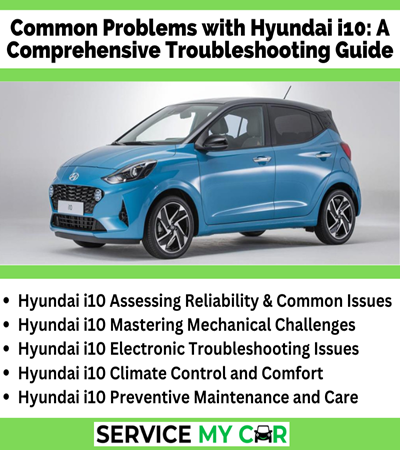
The Hyundai i10 has become a staple in the world of compact city cars, thanks to its affordability, maneuverability, and modern features. However, even this popular vehicle encounters occasional issues. This guide is designed to help you understand and tackle the most common problems faced by Hyundai i10 owners, ensuring a smoother driving experience.
Chapter 1: The Hyundai i10 - A Compact City Car

The Ideal Urban Vehicle
The Hyundai i10 exemplifies Hyundai's commitment to providing reliable, fuel-efficient, and stylish transportation for city dwellers. Its compact size and agile handling make it perfect for navigating busy urban environments.
Evolution Over the Years
Since its debut, the Hyundai i10 has evolved significantly. Each new generation has improved on its predecessor, enhancing design, technology, and performance to meet the changing needs of its drivers.
Key Features and Design Philosophy
The i10's design focuses on maximizing interior space while maintaining a small footprint. Its cabin is surprisingly roomy, providing comfort for both front and rear passengers. Advanced infotainment and safety features make the i10 a well-rounded choice for city driving.
Chapter 2: Assessing Reliability and Common Issues

Reliability Overview
The Hyundai i10 is generally reliable, but like any car, it has some common issues. Reviews and owner feedback highlight a few areas that require attention.
Common Problems
Owners have reported various issues, from transmission troubles and clutch problems to brake and suspension concerns. This guide covers these problems comprehensively, providing solutions to keep your i10 in top shape.
Warranty and Customer Support
Hyundai offers robust warranty coverage and dedicated customer service, helping owners address issues confidently and ensuring a stress-free ownership experience.
Chapter 3: Mastering Mechanical Challenges

Engine Performance
Common engine problems include stalling, rough idling, and power loss. This section provides diagnostic tips and repair strategies to keep your engine running smoothly.
Transmission Issues
Whether you have an automatic or manual transmission, this section covers common problems like gear shifting difficulties, fluid leaks, and clutch issues, offering solutions to prolong your transmission's life.
Suspension and Steering
Suspension and steering are crucial for handling and comfort. Learn about common issues and practical solutions to maintain your vehicle's dynamic performance.
Chapter 4: Electrical and Electronic Troubleshooting

Battery and Charging System
Electrical problems can range from battery drain to charging system failures. This section offers diagnostic techniques to keep your electrical systems in good condition.
Infotainment and Connectivity
Modern cars rely heavily on infotainment systems. This section addresses common issues like Bluetooth pairing problems and navigation glitches, providing steps to restore functionality.
Lighting and Electrical Accessories
From headlights to power windows, electrical accessories can fail. Find practical solutions to keep all your vehicle's electrical components working properly.
Chapter 5: Climate Control and Comfort

HVAC System
Maintaining a comfortable cabin temperature is essential. This section covers issues with heating and cooling, including refrigerant leaks and compressor failures, offering guidance to keep your climate control system in peak condition.
Comfort and Convenience Features
Features like power-adjustable seats and sunroofs can enhance your driving experience. This section addresses common issues with these amenities and provides strategies for resolving them, ensuring a luxurious and comfortable ride.
Chapter 6: Preventive Maintenance and Care

Routine Maintenance
Preventive maintenance is key to vehicle longevity and reliability. This section emphasizes the importance of following manufacturer-recommended maintenance schedules and conducting regular inspections to identify potential issues early.
DIY vs. Professional Service
Some maintenance tasks can be handled at home, while others require professional expertise. This section helps you decide when to tackle repairs yourself and when to seek professional assistance, ensuring every job is done correctly.
Genuine Parts and Accessories
Using genuine parts and accessories is crucial for maintaining the Hyundai i10’s performance and integrity. This section highlights the importance of sourcing authentic components to ensure quality and compatibility.
Chapter 7: Future Trends and Innovations

Advanced Automotive Technologies
The automotive industry is rapidly evolving, and the Hyundai i10 is keeping pace. This section explores emerging trends like electrification, autonomous driving, and enhanced connectivity features, offering a glimpse into the future of this compact car.
Sustainability and Environmental Responsibility
As environmental concerns grow, Hyundai is committed to sustainability and eco-friendly technologies. This section discusses Hyundai’s efforts to integrate greener solutions, making the i10 a responsible choice for environmentally conscious drivers.
Thanks for giving your valuable time to read this blog, In case you have a car and Wondering, how to find the nearest car garage to get the car service? Open google type car workshop dubai near me and you will find Service My Car on the top to get the best workshop in the town.
Conclusion
The Hyundai i10 is a versatile and reliable companion for city dwellers seeking affordability, practicality, and modern features. While no vehicle is free from occasional issues, this comprehensive guide equips you with the knowledge and solutions to confidently navigate and overcome common challenges, ensuring a seamless and enjoyable driving experience.
-
A Comprehensive Guide to Common Volkswagen Tiguan Problems & Issues
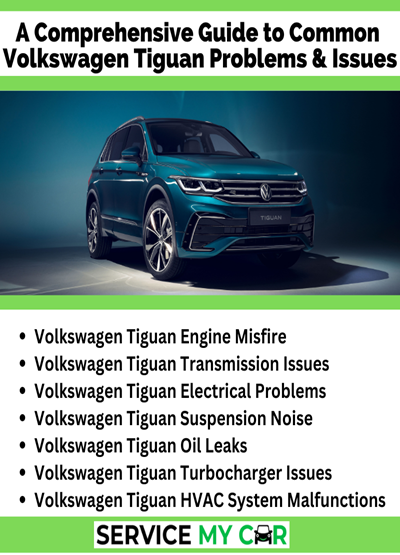
If you’re a proud owner of a Volkswagen Tiguan, you know it’s a reliable and stylish SUV that offers a smooth ride and ample space. However, like any vehicle, the Tiguan is not immune to its share of issues. In this comprehensive guide, we’ll delve into some common problems that Tiguan owners may encounter, along with insights into their causes, solutions, and tips for preventative maintenance. Whether you’re facing minor annoyances or more serious concerns, this guide aims to equip you with the knowledge needed to keep your Tiguan running smoothly for years to come.
Volkswagen Tiguan Engine Misfire

Symptoms: Rough idling, lack of power, illuminated check engine light.
Causes: Faulty ignition coils, spark plugs, or fuel injectors.
Solutions: Replace faulty components, perform regular tune-ups, use high-quality fuel.
Preventative Maintenance: Follow manufacturer’s recommended service intervals, address engine warning signs promptly.
Volkswagen Tiguan Transmission Issues
Symptoms: Delayed shifting, jerking or slipping during acceleration.
Causes: Low transmission fluid levels, worn-out clutch components, electronic control module failure.
Solutions: Check and top up transmission fluid regularly, repair or replace worn-out parts, update software as needed.
Preventative Maintenance: Flush and replace transmission fluid according to manufacturer’s recommendations, and avoid towing heavy loads beyond vehicle capacity.
Volkswagen Tiguan Electrical Problems

Symptoms: Malfunctioning power windows, non-responsive infotainment system, flickering lights.
Causes: Faulty wiring, blown fuses, issues with control modules.
Solutions: Inspect and repair damaged wiring, replace blown fuses, diagnose and repair control module faults.
Preventative Maintenance: Keep electrical components clean and dry, avoid overloading the electrical system with aftermarket accessories.
Volkswagen Tiguan Suspension Noise

Symptoms: Clunking or knocking sounds when driving over bumps or rough roads.
Causes: Worn-out bushings, struts, or control arm components.
Solutions: Replace worn suspension parts, perform wheel alignment, lubricate components as needed.
Preventative Maintenance: Regularly inspect suspension components for signs of wear, avoid driving over rough terrain at high speeds.
Volkswagen Tiguan HVAC System Malfunctions

Symptoms: Inconsistent heating or cooling, strange odors from vents, loud noises when HVAC system is activated.
Causes: Clogged cabin air filter, malfunctioning blower motor, refrigerant leaks.
Solutions: Replace cabin air filter, repair or replace faulty blower motor, detect and repair refrigerant leaks.
Preventative Maintenance: Replace cabin air filter at recommended intervals, perform regular checks on HVAC system components.
Volkswagen Tiguan Oil Leaks

Symptoms: Oil spots or puddles underneath the vehicle, burning oil smell, low oil levels. Causes: Worn-out gaskets, seals, or oil pan damage.
Solutions: Replace worn gaskets and seals, repair or replace damaged oil pan, ensure proper tightening of oil drain plug.
Preventative Maintenance: Check oil levels regularly, inspect engine bay for signs of oil leaks, address leaks promptly to prevent engine damage.
Volkswagen Tiguan Turbocharger Issues

Symptoms: Decreased engine performance, excessive exhaust smoke, whining or grinding noises from turbocharger.
Causes: Turbocharger oil leaks, worn-out bearings, boost pressure leaks.
Solutions: Repair or replace faulty turbocharger components, clean or replace air filters, address oil leaks in the turbocharger system.
Preventative Maintenance: Use high-quality synthetic oil and change it at recommended intervals, avoid aggressive driving habits that can strain the turbocharger, and monitor boost pressure levels regularly.
How Service My Car Assists You?

Have you reached a point where you’re questioning, “Where can I find the top car garage in dubai for my car battery change?” Look no further. At Service My Car, we provide premium car servicing, wheel alignment, repair, battery change, and maintenance services, always within your reach. With specialized service offerings and comprehensive service packages, we ensure the collection and drop-off of your vehicle following its maintenance.
Conclusion:
Owning a Volkswagen Tiguan comes with its fair share of joys and challenges. While the Tiguan boasts reliability and performance, it’s essential to be aware of common problems that may arise over time. By staying proactive with maintenance and addressing issues promptly, you can ensure that your Tiguan remains a dependable companion for your adventures on the road. Whether it’s engine misfires, transmission woes, electrical gremlins, suspension noises, or HVAC hiccups, this guide serves as a comprehensive resource to help you navigate and overcome these challenges. Remember, a well-maintained Tiguan is a happy Tiguan!
-
Navigating Common Issues with the Hyundai i10 A Comprehensive Guide to Solutions
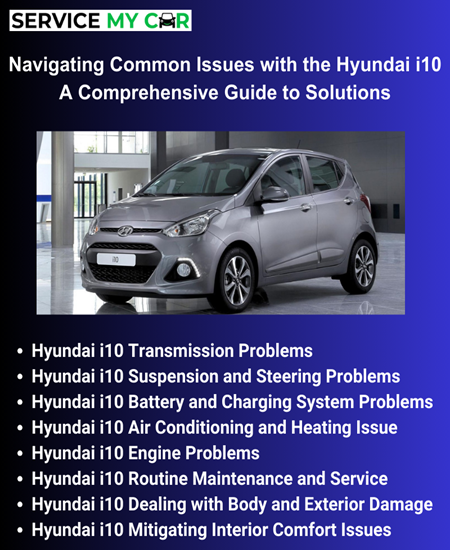
The Hyundai i10 stands as a testament to Hyundai's commitment to delivering reliable, efficient, and stylish city cars. As a popular choice among urban drivers worldwide, the Hyundai i10 offers a blend of affordability, practicality, and modern features. However, like any vehicle, the Hyundai i10 is not without its share of common issues that owners may encounter.
In this extensive guide, we'll delve into the typical problems faced by Hyundai i10 owners and provide comprehensive solutions to address them. Whether you're a current owner or considering purchasing a Hyundai i10, this guide will equip you with the knowledge needed to navigate potential challenges and ensure a seamless driving experience.
Chapter 1: Understanding the Hyundai i10 - A Compact Marvel
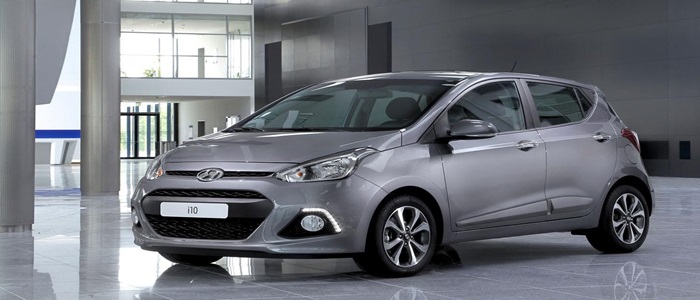
Introduction to the Hyundai i10: An overview of Hyundai's compact city car, highlighting its compact dimensions, fuel efficiency, and agile handling.
Evolution of the i10: Tracing the evolution of the Hyundai i10 through generations, showcasing its evolution in design, technology, and performance.
Design and Features: Exploring the design philosophy behind the Hyundai i10 and its key features, including interior comfort, infotainment options, and safety technologies.
Chapter 2: Reliability and Common Issues - What to Expect

Reliability of the Hyundai i10: Examining the overall reliability of the Hyundai i10 based on owner experiences and industry reviews.
Common Problems: Identifying and discussing prevalent issues reported by Hyundai i10 owners, ranging from mechanical to electrical challenges.
Warranty and Support: Highlighting Hyundai's warranty coverage and customer support options available to address issues encountered during ownership.
Chapter 3: Mechanical Challenges and Solutions
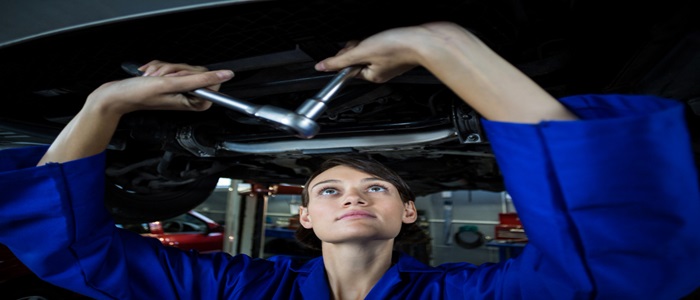
Engine Performance: Addressing common mechanical issues such as engine stalling, rough idling, and loss of power, along with diagnostic and repair strategies.
Transmission Problems: Discussing issues related to automatic and manual transmissions, including gear shifting issues, transmission fluid leaks, and clutch problems.
Suspension and Steering: Exploring issues with suspension components, steering responsiveness, and alignment issues, and their impact on ride quality and handling.
Chapter 4: Electrical and Electronic Troubleshooting
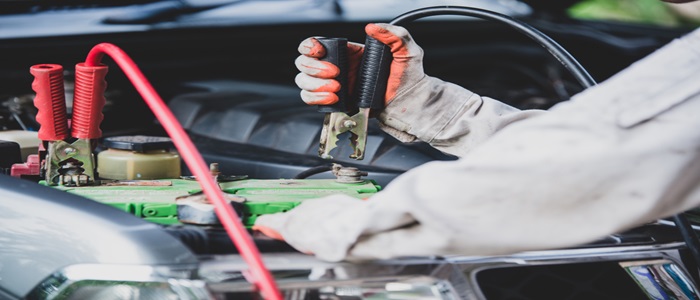
Battery and Charging System: Examining common electrical issues such as battery drain, charging system malfunctions, and strategies for diagnosing and resolving electrical faults.
Infotainment and Connectivity: Discussing problems with the infotainment system, Bluetooth connectivity, and navigation features, along with troubleshooting tips.
Lighting and Electrical Accessories: Exploring issues with exterior and interior lighting, power windows, central locking system, and electronic accessories, and strategies for resolving them.
Chapter 5: Climate Control and Comfort Features

Air Conditioning and Heating: Addressing common issues with the HVAC system, including insufficient cooling or heating, refrigerant leaks, and compressor failures.
Comfort and Convenience: Discussing problems with power-adjustable seats, sunroof operation, and other comfort features, and strategies for resolving them.
Chapter 6: Maintenance and Preventive Care
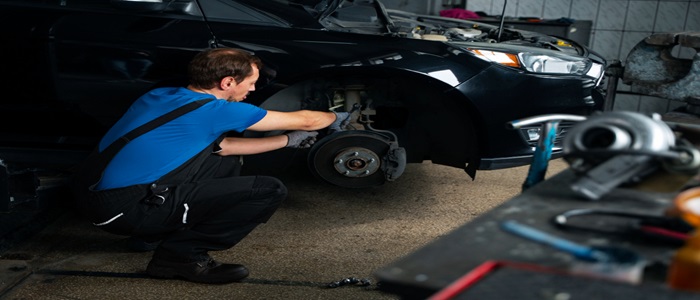
Routine Maintenance: Outlining the importance of adhering to manufacturer-recommended maintenance schedules and conducting regular inspections to prevent potential problems. DIY vs.
Professional Service: Discussing when to perform DIY maintenance tasks and when to seek professional assistance from certified Hyundai technicians.
Genuine Parts and Accessories: Emphasizing the significance of using genuine Hyundai parts and accessories for repairs and upgrades to maintain vehicle integrity and performance.
Chapter 7: Future Trends and Innovations

Advanced Technologies: Exploring emerging trends and innovations in automotive technology, including electrification, autonomous driving, and connectivity features, and their potential impact on future Hyundai i10 models.
Sustainability and Environmental Responsibility: Discussing Hyundai's commitment to sustainability and efforts to integrate eco-friendly technologies into their vehicles.
How Service My Car Assists You?
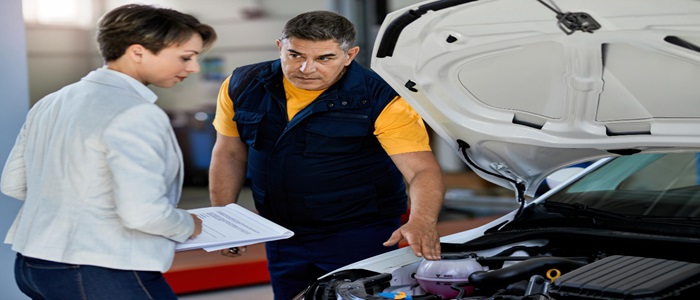
Looking to optimize your acura‘s performance? Searching for a reliable acura transmission replacement in Dubai? You’re in the right place with Service My Car! Our skilled technicians in Dubai are experts in acura maintenance, guaranteeing top-quality care for your vehicle. Rely on us to improve your car’s lifespan and performance with our precise transmission replacement services. Drive with confidence, knowing your acura is well taken care of. Book your appointment with Service My Car today for a hassle-free experience!
Conclusion:
In conclusion, the Hyundai i10 represents a versatile and dependable choice for urban drivers seeking affordability and practicality without compromising on features and performance. While no vehicle is without its challenges, armed with the knowledge and solutions provided in this guide, Hyundai i10 owners can address common issues effectively and ensure a smooth driving experience. By prioritizing regular maintenance, utilizing genuine parts, and staying informed about advancements in automotive technology, owners can continue to enjoy the convenience and reliability offered by the Hyundai i10 for years to come.
-
Exploring the 10 Most Common Challenges with Jeep Wranglers
Jeep Wranglers hold a special place in the hearts of adventurers and off-road enthusiasts alike. Renowned for their ruggedness and iconic design, Wranglers have dominated the trails for decades. However, like any vehicle, they’re not without their challenges. In this comprehensive guide, we’ll delve deep into the 10 most common issues faced by Jeep Wrangler owners, spanning different generations. Whether you’re a seasoned Wrangler owner or considering joining the Jeep family, this guide aims to equip you with valuable insights to navigate potential challenges with confidence.
Understanding the Jeep Wrangler Legacy
Before we dive into the specific challenges, it’s crucial to understand the rich legacy of the Jeep Wrangler. From its origins as a military vehicle to its evolution into a beloved civilian off-roader, each Wrangler generation has contributed to its enduring legacy. We’ll explore the key milestones in Wrangler history and how they’ve shaped the vehicle we know today.
Common Issues Across Generations

Jeep Wrangler enthusiasts often share stories of their adventures on and off the road. However, behind the thrill of exploration lies a set of common challenges that many owners encounter. From mechanical quirks to electrical gremlins, we’ll highlight the 10 most prevalent issues faced by Wrangler owners across different generations. This section will serve as a roadmap for readers to identify potential challenges in their own vehicles.
Troubleshooting Engine Concerns

The heart of any vehicle lies in its engine, and Wranglers are no exception. Engine-related issues can range from minor nuisances to major headaches if left unaddressed. We’ll discuss common engine challenges such as overheating, oil leaks, and misfires, providing insights into potential causes and solutions. Additionally, we’ll offer practical maintenance tips to keep Wrangler engines running smoothly.
Navigating Electrical System Hiccups

The modern Jeep Wrangler is equipped with a myriad of electrical components, ranging from entertainment systems to advanced safety features. Unfortunately, electrical issues can disrupt the driving experience and leave owners scratching their heads. We’ll explore common electrical challenges such as TIPM failure, malfunctioning power windows, and dashboard warning lights. By understanding the intricacies of the Wrangler’s electrical system, owners can troubleshoot problems more effectively.
Addressing Suspension and Steering Problems
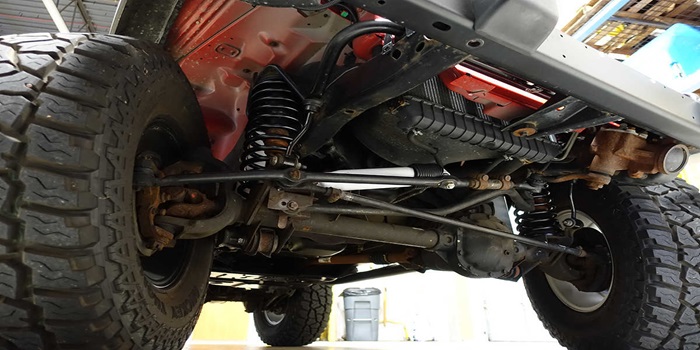
Off-road enthusiasts rely on their Wranglers’ suspension and steering systems to tackle rugged terrain with confidence. However, worn-out components and alignment issues can compromise vehicle stability and handling. We’ll delve into common suspension and steering challenges, including the infamous “Death Wobble” phenomenon. Readers will learn how to identify warning signs and take proactive measures to maintain their Wranglers’ suspension integrity.
Tackling Transmission and Drivetrain Issues

Smooth shifting and reliable 4WD engagement are essential for Wrangler owners venturing off the beaten path. Transmission and drivetrain problems can disrupt the driving experience and jeopardize vehicle performance. We’ll examine common transmission woes such as slipping gears and transfer case leaks, offering practical solutions to keep Wranglers running strong. Additionally, we’ll discuss the importance of regular maintenance to prolong the lifespan of critical drivetrain components.
Dealing with Body and Exterior Damage
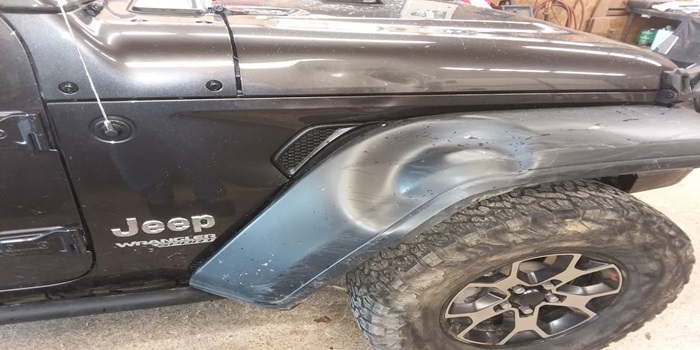
Jeep Wranglers are designed to withstand the rigors of off-road adventures, but they’re not invincible to dents, scratches, and rust. Body and exterior damage can detract from the vehicle’s aesthetic appeal and compromise structural integrity. We’ll explore common sources of body damage, from trail hazards to parking lot mishaps, and provide guidance on repair options. Whether it’s repairing a dented fender or preventing rust formation, readers will learn how to keep their Wranglers looking pristine.
Mitigating Interior Comfort and Convenience Issues

While Wranglers excel in ruggedness and versatility, interior comfort and convenience features may leave something to be desired for some owners. From cramped seating arrangements to lacklustre climate control, we’ll address common complaints regarding interior ergonomics. Additionally, we’ll share aftermarket upgrades and DIY solutions to enhance the comfort and convenience of Wrangler interiors, making long drives and off-road excursions more enjoyable for occupants.
Planning for Routine Maintenance and Service

Preventive maintenance is the key to keeping any vehicle running smoothly, and Jeep Wranglers are no exception. We’ll outline essential maintenance tasks, such as oil changes, fluid checks, and tire rotations, to ensure Wranglers remain in peak condition. Additionally, we’ll discuss the importance of adhering to manufacturer-recommended service intervals and seeking professional assistance for complex repairs. By staying proactive about maintenance, owners can minimize the likelihood of costly breakdowns and prolong the lifespan of their Wranglers.
Embracing the Wrangler Ownership Experience

Despite the occasional challenges, owning a Jeep Wrangler is a rewarding experience that offers unparalleled freedom and adventure. In this final section, we’ll celebrate the unique bond between Wrangler owners and their vehicles. From weekend trail rides to community events and owner meetups, we’ll explore the vibrant Wrangler enthusiast community and the camaraderie it fosters. Whether you’re a lifelong Wrangler aficionado or a newcomer to the Jeep family, this section will reaffirm the joy of Wrangler ownership and inspire readers to embark on their next off-road journey with confidence.
How Service My Car Assists You?

Wondering where to get a professional mercedes benz maintenance in Dubai? Look no further than Service My Car! Our expert technicians in Dubai specialize in mercedes benz maintenance, ensuring your vehicle receives top-notch care. Trust us to enhance your car's longevity and smooth operation with our meticulous maintenance services. Drive confidently knowing your mercedes benz is in capable hands. Schedule your appointment with Service My Car today for a seamless experience!
Conclusion
The Jeep Wrangler is more than just a vehicle; it’s a symbol of adventure, exploration, and freedom. While it’s not immune to challenges, understanding and addressing common issues can empower owners to enjoy their Wranglers to the fullest. Whether it’s troubleshooting engine woes, navigating electrical gremlins, or embracing the Wrangler lifestyle, this comprehensive guide aims to equip readers with the knowledge and resources they need to tackle any obstacle that comes their way. With a little TLC and a sense of adventure, owning a Jeep Wrangler is an experience like no other. So buckle up, hit the trails, and let the adventure begin!
-
Unveiling the Common Problems in Renault Duster: Your Go-To Guide for Reliable Solutions
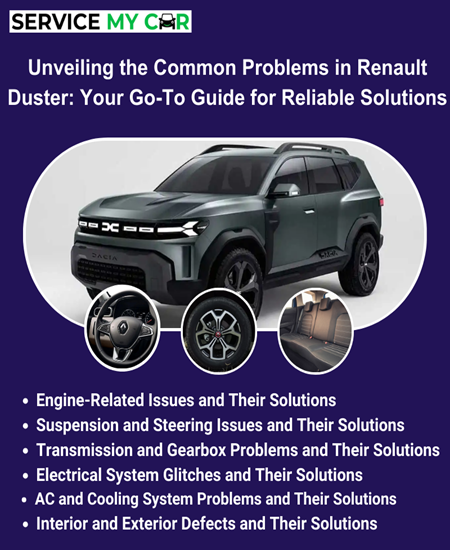
If you're a proud owner of a Renault Duster, you know that it's a reliable and versatile SUV that can handle various terrains with ease. However, like any vehicle, it's not immune to occasional issues. That's why we've created this comprehensive guide to help you navigate through the common problems that Renault Duster owners may encounter, providing you with reliable solutions.
Engine-Related Issues and Their Solutions
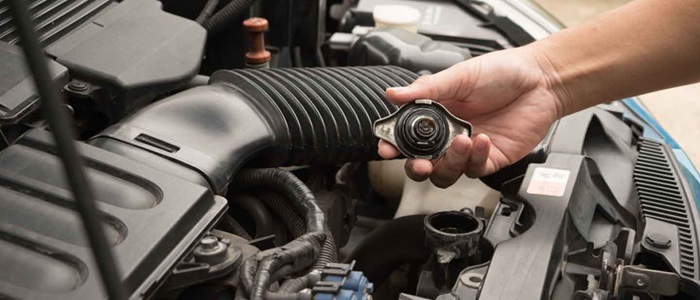
One of the most common problems encountered by Renault Duster owners is related to engine performance. Some owners have reported issues with rough idling, decreased power, or even complete engine failure. These issues can be frustrating and may impact the overall driving experience. However, there are several potential causes and solutions to consider.
One possible cause of engine-related problems in the Renault Duster is a faulty fuel pump. If you're experiencing issues with starting the vehicle or notice a decrease in power, it could be due to a failing fuel pump. Replacing the fuel pump should resolve the problem and restore proper engine performance.
Another common issue is related to the ignition coils. Faulty ignition coils can lead to misfires, rough idling, and even engine stalling. If you're experiencing any of these symptoms, it's recommended to have your ignition coils inspected and replaced if necessary.
Transmission and Gearbox Problems and Their Solutions
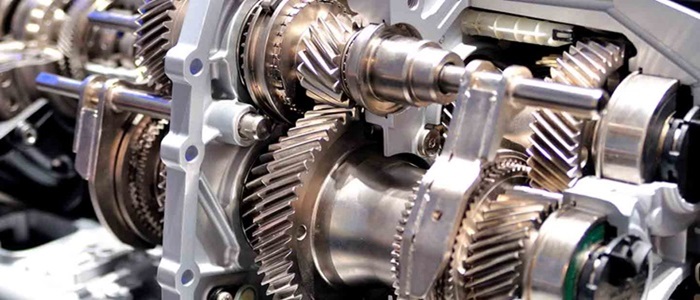
Transmission and gearbox issues are another common concern among Renault Duster owners. Some owners have reported problems with gear shifting, such as difficulty in engaging gears or gear slippage. These issues can greatly affect the driving experience and should be addressed promptly.
One potential cause of transmission problems in the Renault Duster is low transmission fluid levels. Insufficient fluid can lead to improper gear engagement and slipping. Checking and topping up the transmission fluid can often resolve these issues.
Another common transmission-related problem is a faulty clutch. If you're experiencing difficulty in shifting gears or notice a burning smell, it could be due to a worn-out or malfunctioning clutch. Replacing the clutch assembly should solve the problem and restore smooth gear shifting.
Electrical System Glitches and Their Solutions
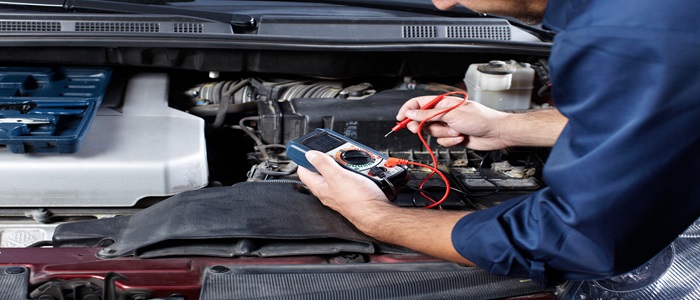
Electrical system glitches can be frustrating and often lead to various issues in the Renault Duster. Owners have reported problems with the central locking system, power windows, and even dashboard instrument cluster malfunctions. Understanding the potential causes and solutions can help you address these electrical problems effectively.
One common cause of electrical system glitches in the Renault Duster is a faulty battery or alternator. A weak battery or a malfunctioning alternator can lead to various electrical issues, including intermittent power windows, dashboard malfunctions, and even starting problems. It's recommended to have your battery and alternator tested and replaced if necessary.
Another potential cause is corroded or loose electrical connections. Over time, the electrical connections in your vehicle can become corroded or loose, leading to intermittent issues. Inspecting and cleaning the electrical connections can often resolve these problems and ensure proper system functionality.
Suspension and Steering Issues and Their Solutions
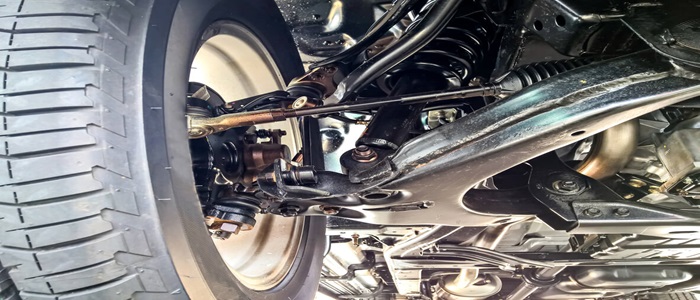
Suspension and steering issues can greatly impact the comfort and handling of your Renault Duster. Some owners have reported problems with suspension noises, uneven tire wear, or excessive vibrations. These issues should not be ignored, as they can lead to further damage and compromise the overall safety of your vehicle.
One potential cause of suspension noises in the Renault Duster is worn-out suspension components. Over time, the suspension components can become worn or damaged, leading to clunking or squeaking noises. Replacing the worn-out components, such as bushings or shock absorbers, can often resolve these issues.
Another common problem is related to wheel alignment and balancing. If you're experiencing uneven tire wear or vibrations, it could be due to misaligned wheels or unbalanced tires. Getting a professional wheel alignment and balancing service can help rectify these issues and improve the overall handling of your vehicle.
Air Conditioning and Cooling System Problems and Their Solutions
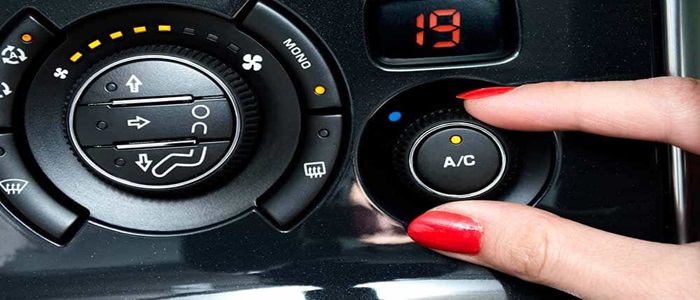
A properly functioning air conditioning and cooling system is essential for a comfortable driving experience, especially during hot summer months. Renault Duster owners have reported issues with the air conditioning not cooling effectively or the engine overheating. These problems can be troublesome, but there are solutions available.
One common cause of air conditioning problems in the Renault Duster is a refrigerant leak. If you notice that your air conditioning is not cooling as it should, it's possible that there is a refrigerant leak. Having the system inspected and repaired by a professional can resolve this issue and restore proper cooling functionality.
Another potential cause of engine overheating is a faulty radiator or cooling fan. If you're experiencing engine overheating or notice coolant leaks, it's important to have your radiator and cooling fan inspected. Replacing any faulty components can prevent further damage and ensure proper engine cooling.
Interior and Exterior Defects and Their Solutions
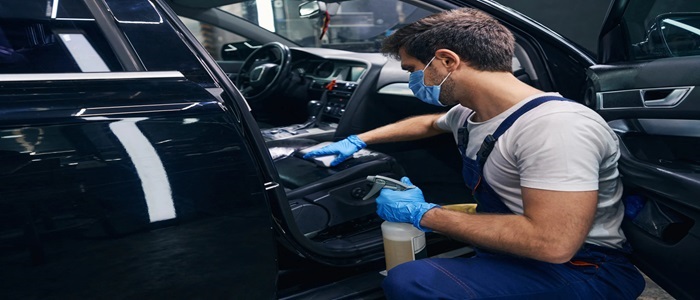
In addition to mechanical issues, Renault Duster owners have also reported various interior and exterior defects. These problems can range from faulty door handles to peeling paint. While these issues may not impact the overall performance of your vehicle, they can affect its appearance and resale value.
One common interior defect reported by Renault Duster owners is a faulty door handle mechanism. If you're having trouble opening or closing your doors, it could be due to a malfunctioning door handle mechanism. Replacing the faulty components should resolve this issue and restore proper functionality.
Exterior defects, such as peeling paint or rust spots, can be unsightly and detract from the overall appearance of your Renault Duster. Proper maintenance and regular waxing can help prevent these issues. If you notice any paint defects or rust spots, it's recommended to have them addressed promptly to prevent further damage.
Tips for Preventing and Maintaining Your Renault Duster
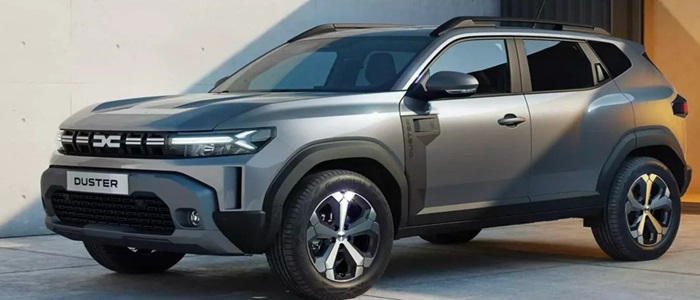
Prevention is always better than cure when it comes to vehicle maintenance. By following these tips, you can minimize the likelihood of encountering common problems in your Renault Duster and ensure its longevity:
● Regularly check and maintain proper fluid levels, including engine oil, coolant, and transmission fluid.
● Follow the recommended service intervals for oil changes, filter replacements, and other routine maintenance tasks.
● Inspect and maintain the tires, including regular rotations and proper inflation.
● Keep the electrical connections clean and free from corrosion.
● Park your vehicle in a covered or shaded area to minimize exposure to harsh weather conditions.
By following these preventive measures and staying proactive with your vehicle's maintenance, you can reduce the risk of encountering common problems and enjoy a trouble-free driving experience with your Renault Duster.
How Service My Car Assists You?

Are you at a stage where you're contemplating, "Where can I locate the finest nissan head gasket replacement in dubai for my nissan car?" Your search ends here. At Service My Car, we offer top-notch car servicing, repair, head gasket replacement, and maintenance solutions, always conveniently accessible to you. With tailored service options for the nissan head gasket replacement in Dubai and extensive service packages, we guarantee the pickup and delivery of your vehicle after its maintenance.
Conclusion:
Owning a Renault Duster can be a rewarding experience, but it's important to be aware of the common problems that can arise. By understanding these issues and their solutions, you can effectively address them and keep your Renault Duster running smoothly.
Whether you're dealing with engine-related concerns, transmission problems, electrical glitches, or other common issues, this comprehensive guide has provided you with reliable solutions. Remember to stay proactive with your vehicle's maintenance and address any problems promptly to ensure a reliable and trouble-free driving experience with your Renault Duster.
Say goodbye to the frustration of troubleshooting on your own. With our go-to guide for reliable solutions, you can keep your Renault Duster running smoothly and enjoy your driving experience to the fullest.
-
Decoding the Mysteries: Unraveling the Common Skoda Car Issues
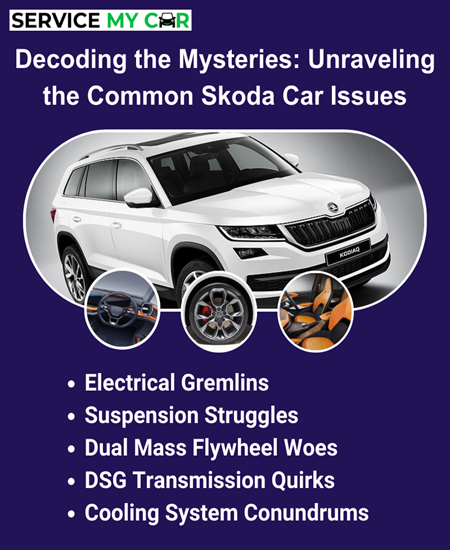
Skoda, a brand synonymous with elegance and performance, has carved its niche in the automotive world. However, like any other vehicle, Skoda cars are not immune to occasional hiccups. Understanding the common issues that Skoda owners may encounter can help unravel the mysteries behind these challenges and ensure a smoother driving experience.
1. Electrical Gremlins
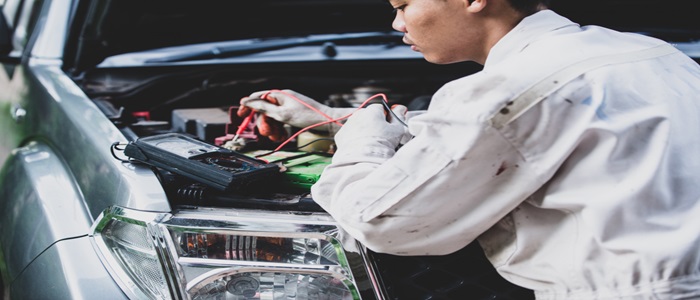
Skoda cars, like many modern vehicles, come equipped with a plethora of electronic features. While these add-ons enhance the driving experience, they also introduce the possibility of electrical issues. Owners have reported problems with malfunctioning sensors, central locking failures, and issues with the infotainment system.
To mitigate these problems, regular software updates and timely maintenance checks are crucial. Skoda's advanced diagnostic tools can identify potential electrical issues before they escalate, ensuring a hassle-free ride.
2. Dual Mass Flywheel Woes
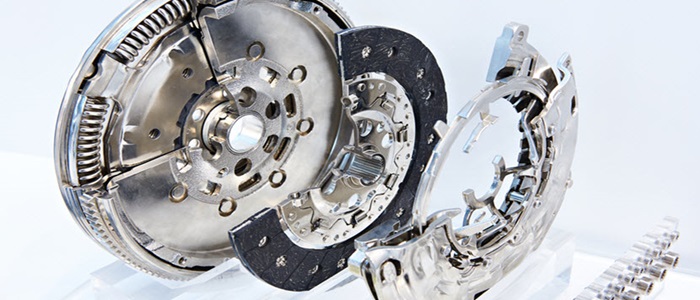
A common concern among Skoda owners revolves around the dual mass flywheel, a component that assists in smooth transmission and reduces engine vibrations. Over time, wear and tear can lead to issues such as excessive noise during gear changes or difficulty in engaging gears.
To address this, it is essential to follow the manufacturer's recommended maintenance schedule. Regular clutch checks and addressing any unusual sounds promptly can prevent the dual mass flywheel from becoming a major headache.
3. DSG Transmission Quirks
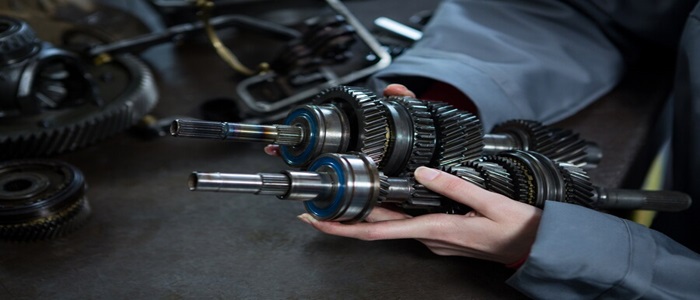
Skoda is known for its Direct Shift Gearbox (DSG), offering a seamless and efficient driving experience. However, some owners have reported problems such as jerky gear shifts, delays, or even complete transmission failures.
Routine servicing and using the recommended transmission fluids are key to preventing DSG-related issues. It's also important to be mindful of how the vehicle is driven; aggressive driving styles can contribute to premature wear and tear on the transmission components.
4. Cooling System Conundrums
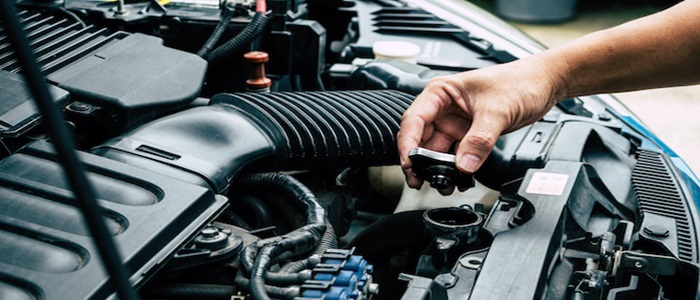
Overheating issues have been reported by some Skoda owners, often linked to problems with the cooling system. Leaks, faulty radiators, or malfunctioning cooling fans can contribute to the engine running hot, potentially causing severe damage.
Regular checks of the cooling system, including hoses, radiator, and coolant levels, are essential preventive measures. Addressing any leaks or malfunctions promptly can save Skoda owners from the headaches associated with overheating.
5. Suspension Struggles
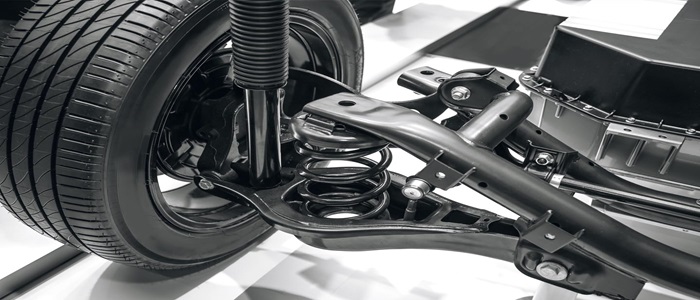
While Skoda cars are known for their comfortable ride, some owners have faced challenges related to the suspension system. Issues such as noisy suspension components, uneven tire wear, or a bumpy ride can affect the overall driving experience.
Ensuring timely suspension system checks, including inspections of shock absorbers, bushings, and springs, can help prevent and address these problems. Regular wheel alignments are also crucial for maintaining optimal suspension performance.
How Service My Car Assist You?

Have you reached a point where you’re questioning, “Where can I find the top lincoln service center for my lincoln car?” Look no further, Service My Car provides comprehensive maintenance solutions, that including lincoln oil filter change in dubai. Our skilled technicians ensure your vehicle runs smoothly, addressing any issues efficiently. We offer regular check-ups, oil filter change, battery replacement, and diagnostics to maintain optimal performance. With specialized expertise in lincoln oil filter change, we guarantee quality service, prolonging your car's lifespan and enhancing its reliability. Trust Service My Car for thorough care and expert assistance, ensuring your lincoln remains in top condition on Dubai's roads.
Conclusion
Owning a Skoda is a delightful experience, but like any relationship, it requires attention and care. By unraveling the common issues associated with Skoda cars, owners can take proactive steps to ensure their vehicles remain reliable and enjoyable for years to come. Regular maintenance, adherence to the manufacturer's guidelines, and prompt attention to any warning signs are the keys to navigating through the occasional challenges that may arise. In doing so, Skoda owners can continue to enjoy the sophistication and performance that define this iconic brand.

You’re offline. This is a read only version of the page.


